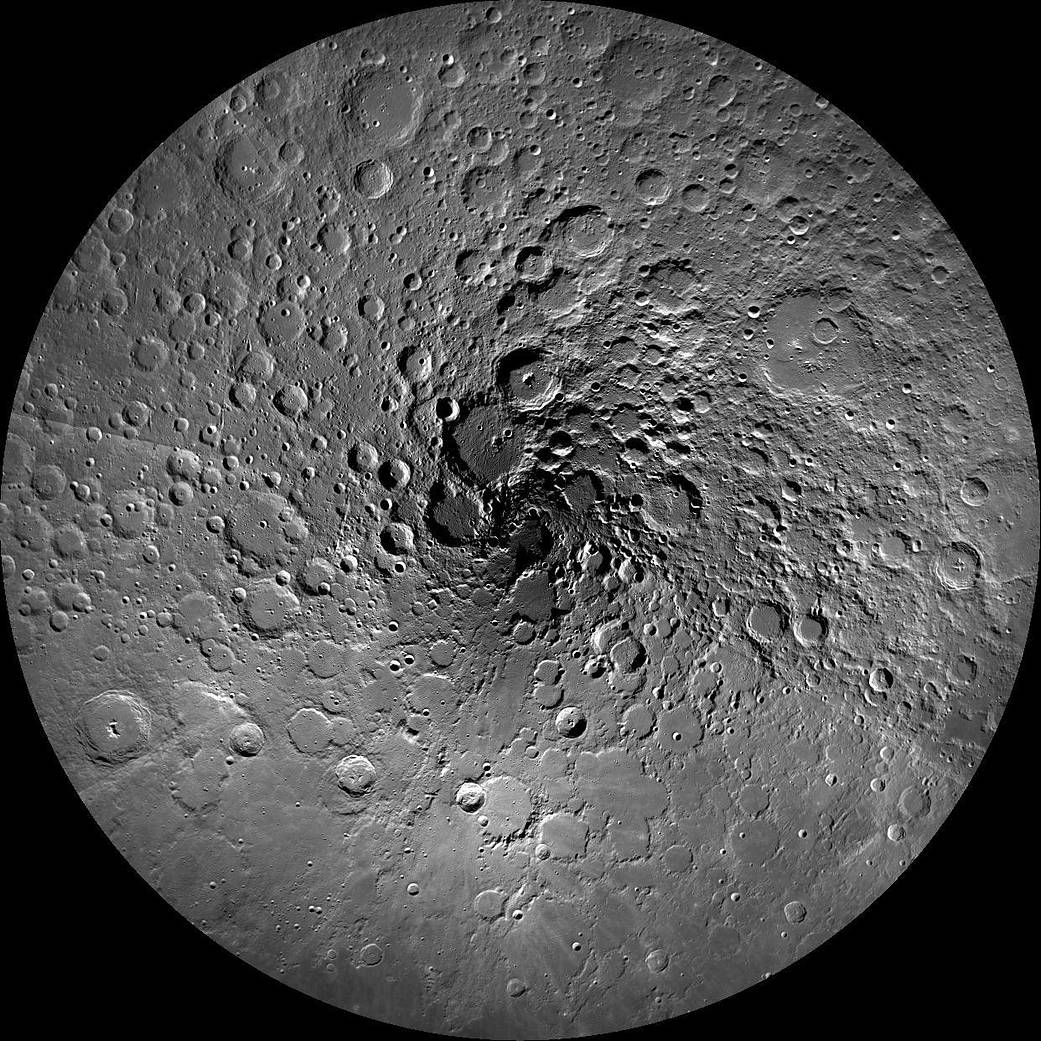
The Earth’s moon has been an endless source of fascination for humanity for thousands of years. When at last Apollo 11 landed on the moon’s surface in 1969, the crew found a desolate, lifeless orb, but one which still fascinates scientist and non-scientist alike.
This image of the moon’s north polar region was taken by the Lunar Reconnaissance Orbiter Camera, or LROC. One of the primary scientific objectives of LROC is to identify regions of permanent shadow and near-permanent illumination. Since the start of the mission, LROC has acquired thousands of Wide Angle Camera images approaching the north pole. From these images, scientists produced this mosaic, which is composed of 983 images taken over a one month period during northern summer. This mosaic shows the pole when it is best illuminated, regions that are in shadow are candidates for permanent shadow.Image Credit: NASA/GSFC/Arizona State University


























